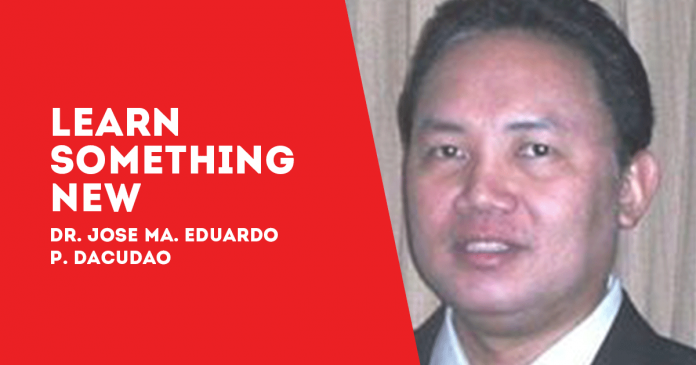
BY DR. JOSE MA. EDUARDO P. DACUDAO
IN THE 1935 Constitution, the idea of One Nation – One Language became evident. The 1935 Constitution mandated the formation of a national language based on one of the Philippine languages.
(A controversy surrounds this provision. The records of the 1935 Constitutional Convention showed that the delegates eventually approved a national language based on all the Philippine languages. The draft went to the style committee, but after alleged manipulation by Tagalistas, the final draft showed a provision that mandated a national language based on one of the Philippine languages.)
1935 CONSTITUTION
ART. XIV, SEC.3. The Congress shall take steps toward the development and adoption of a common national language based on one of the existing native languages. Until otherwise provided by law, English and Spanish shall continue as official languages.
After the promulgation of the 1935 Constitution, the Institute of National Language (now known as the Komisyon ng Wikang Filipino) was created by the National Assembly. It was heavily influenced by leading Tagalog nationalists including Claro M. Recto and President Manuel Luis Quezon himself.
This Institute recommended to President Quezon the choice of Tagalog as the basis of the ‘common national language’ mandated by the Constitution. Quezon then proclaimed Tagalog as the national language of the Philippines on November 30, 1937, supposedly based on the Institute’s recommendation, although it was known that the Tagalista Quezon himself had influenced the Institute’s recommendation.
In brief, Quezon influenced an organization of a government that he led to recommend a National Language that he later officially approved.
Quezon baked the pie and then ate it in the name of all Filipinos.
Naturally educated non-Tagalog Filipinos who saw the implications of Quezon’s actions protested. (There are even reports of Cebuano lawmakers almost engaging in fisticuffs with Tagalistas over the issue in the Congress building.) Thus before World War II, Tagalog was never taught in Philippine schools in the national level. It was clear to the educated non-Tagalogs that allowing the teaching of Tagalog (even a Tagalog honey-coated as ‘Filipino’) would marginalize their peoples, turn them into second class citizens.
Then World War II came, and with it the anti-American Japanese. English, a socially neutral leveling tongue in use all over the Philippines, with the added bonus of being the international language of science, commerce, and diplomacy, was banned, inasmuch as it was the language of the American enemy.
In 1942, executive order 44 issued by collaborationist President Jose P. Laurel ordered the integration of Tagalog into the core subjects of the University of the Philippines. In short order, Tagalog became a permanent course in all Philippine schools, and a symbol of anti-Americanism.
Note that this was a Presidential executive order done without any plebiscite, referendum, or legislated law, and one that was enacted by the Japanese authorities through their collaborationist Tagalog nationalist front men and dummies; which means that if any present-day sitting Philippine President had the enlightened intellect, political will, and personal guts to do it, he could issue another executive order opposing it and Tagalog subjects can be taken off the school curriculum right here right now; and replace it with a multilingual model. (To be continued)/PN





